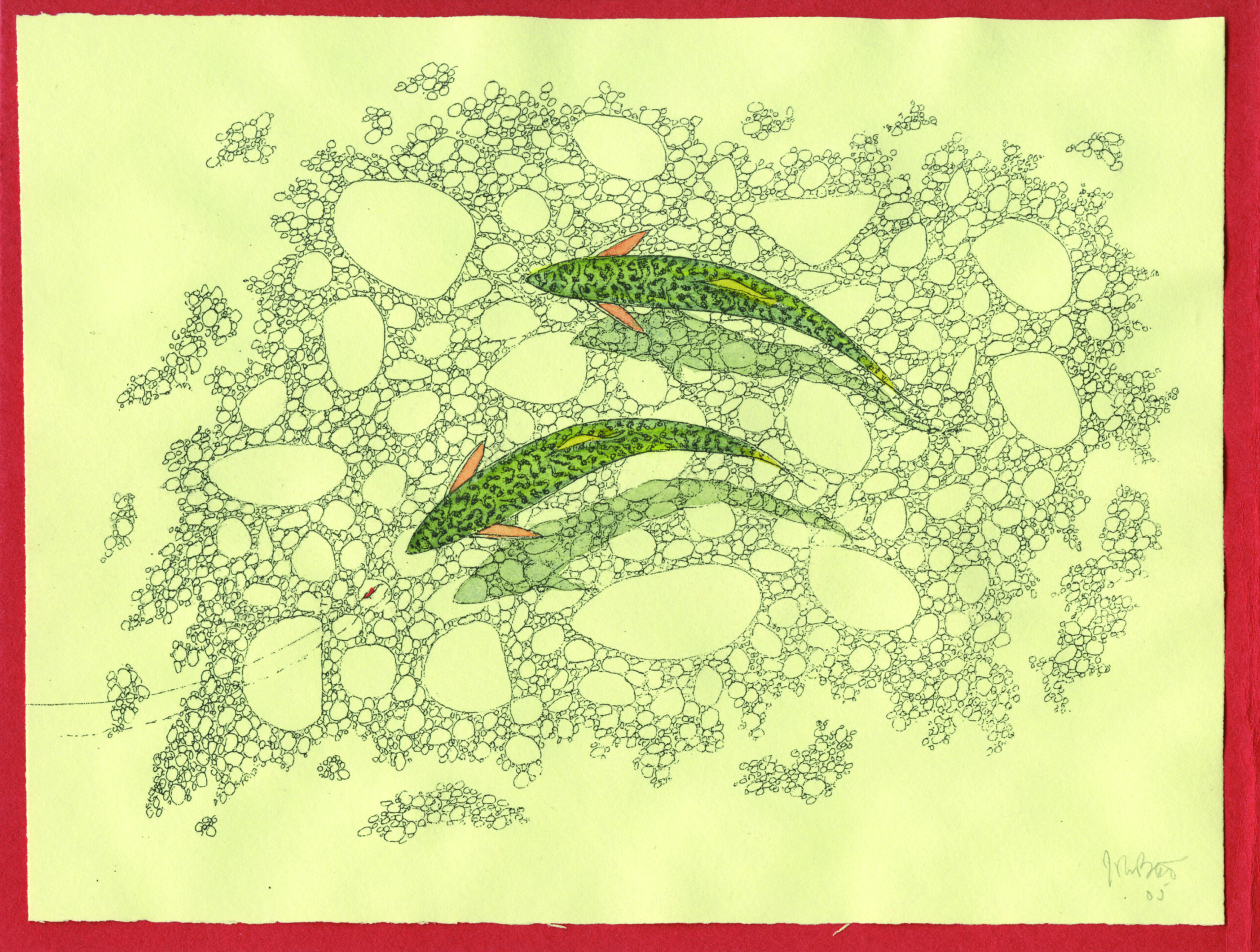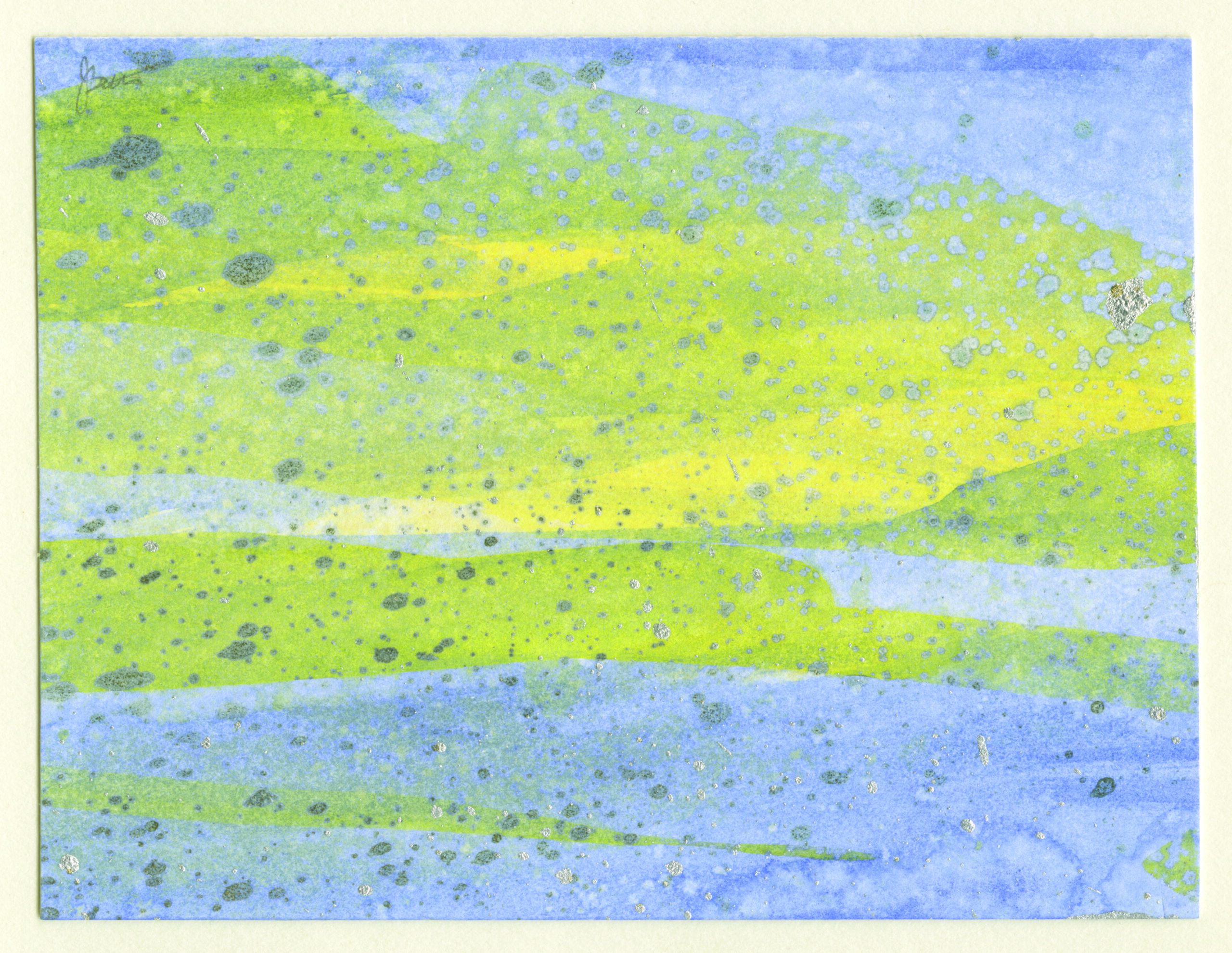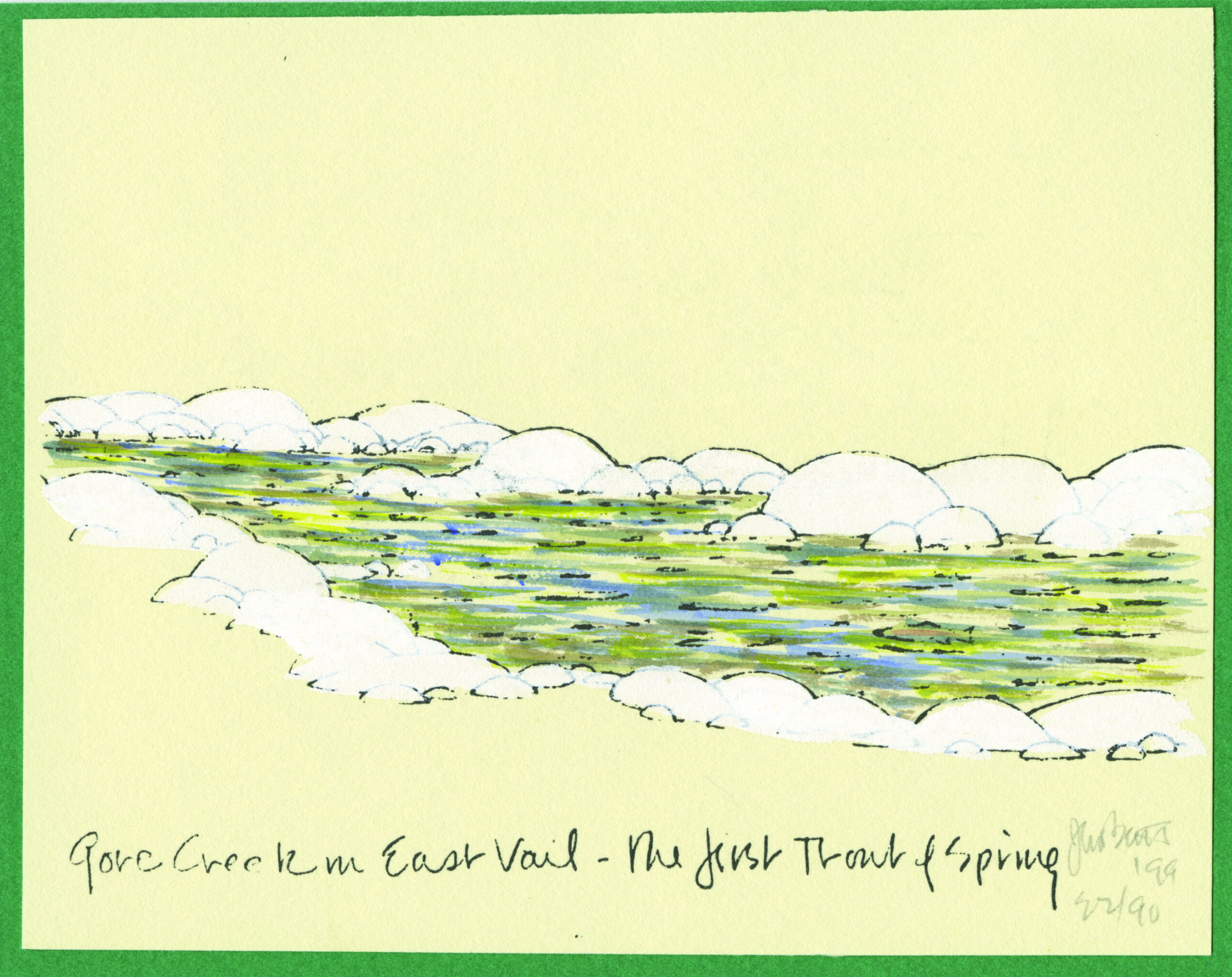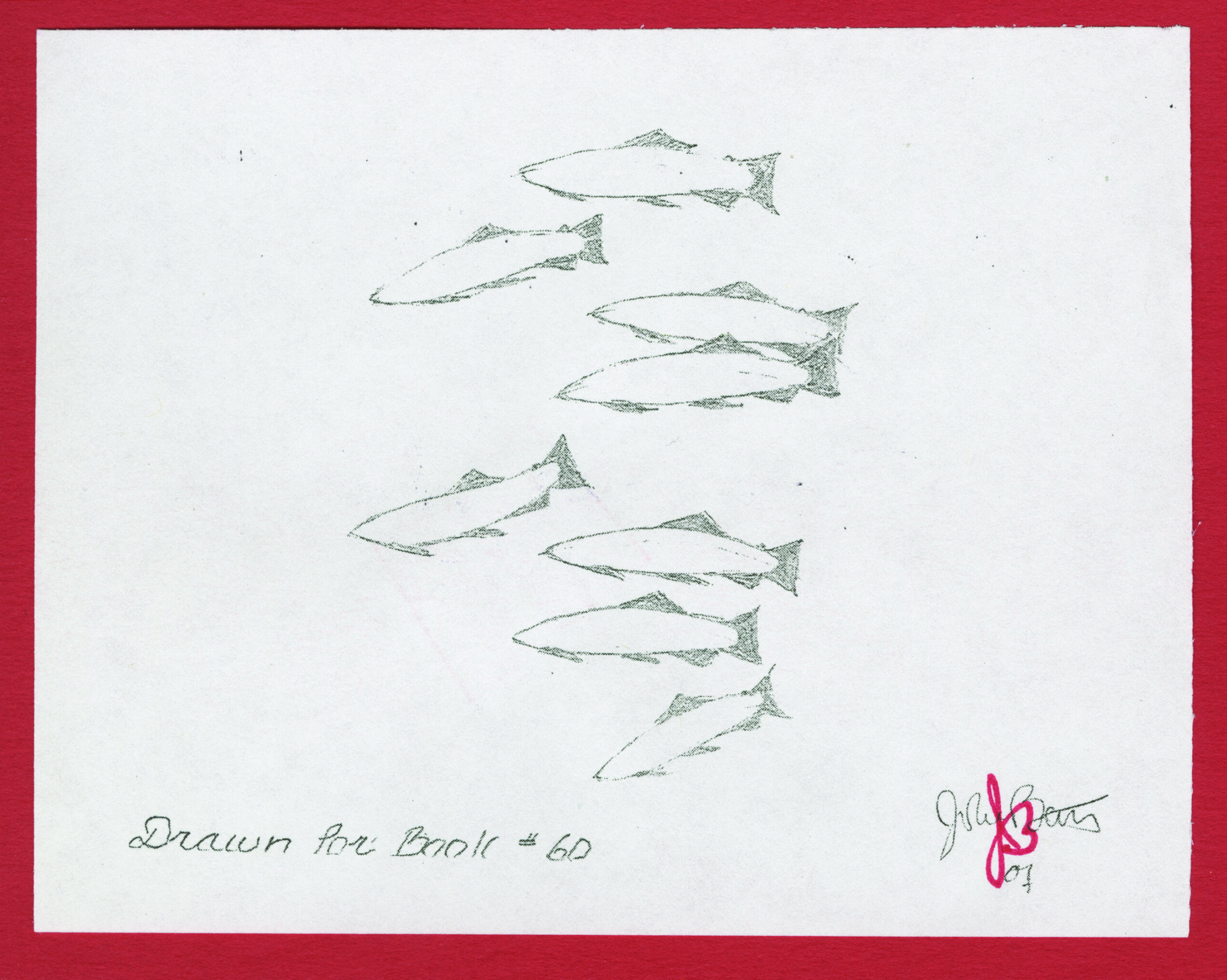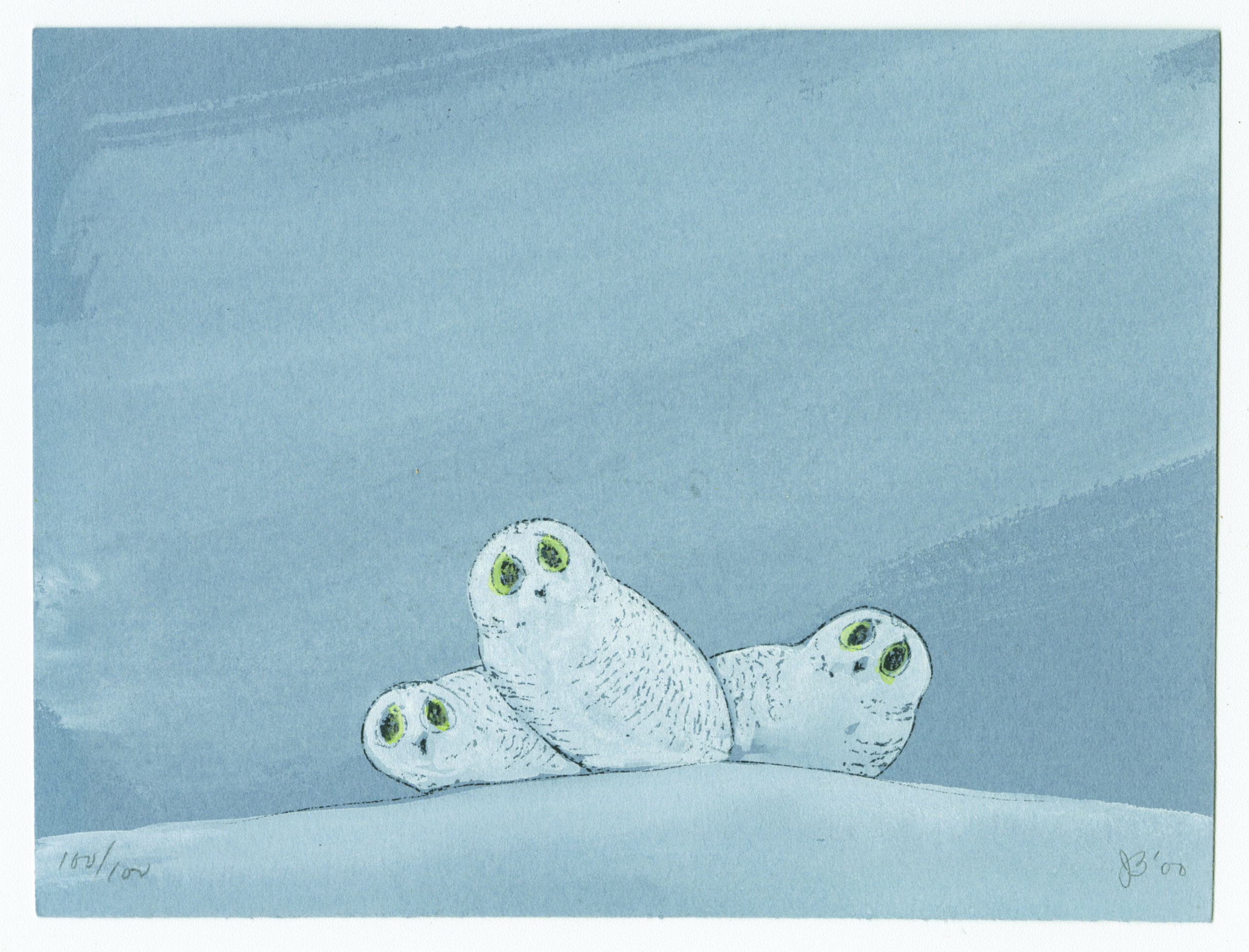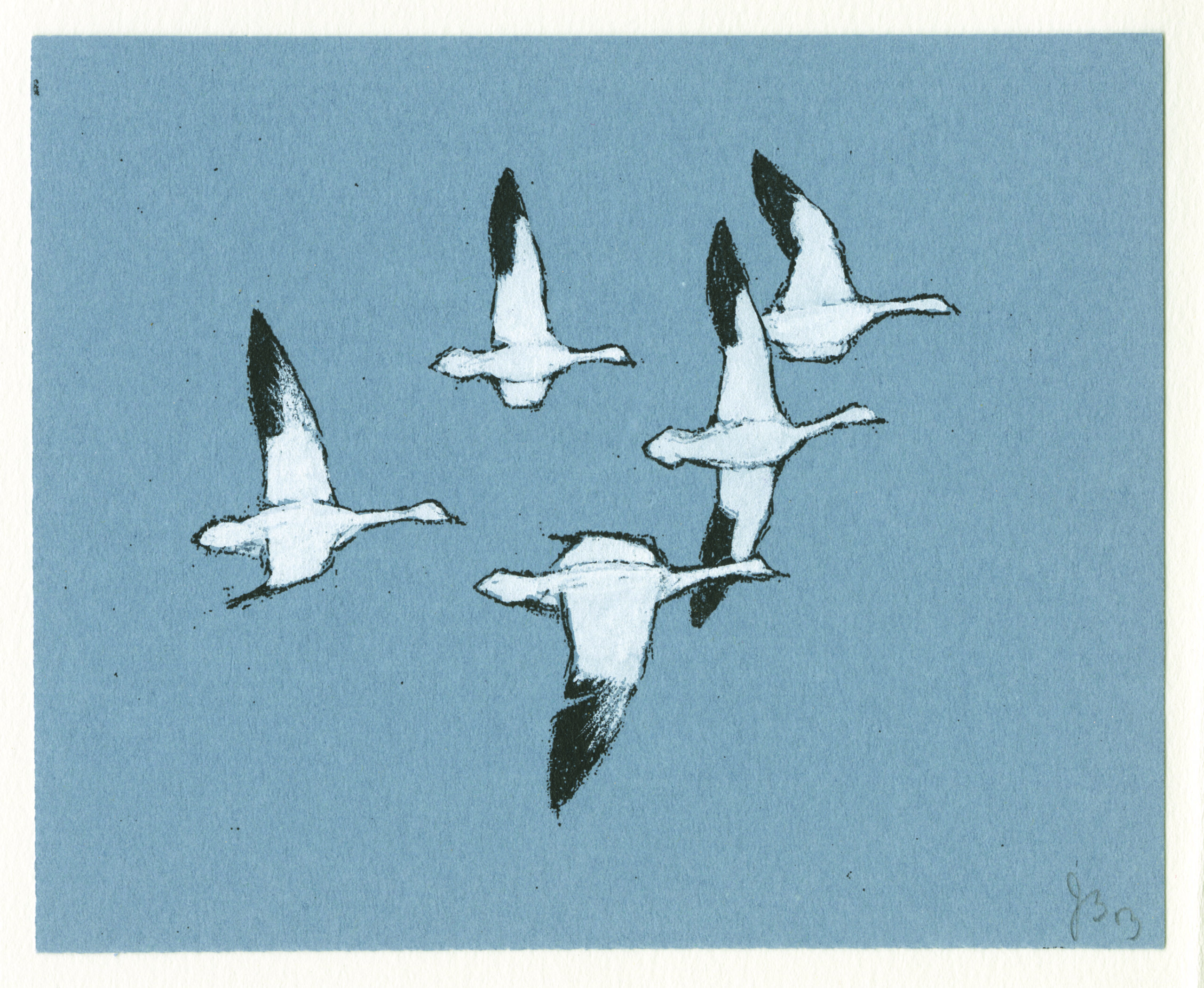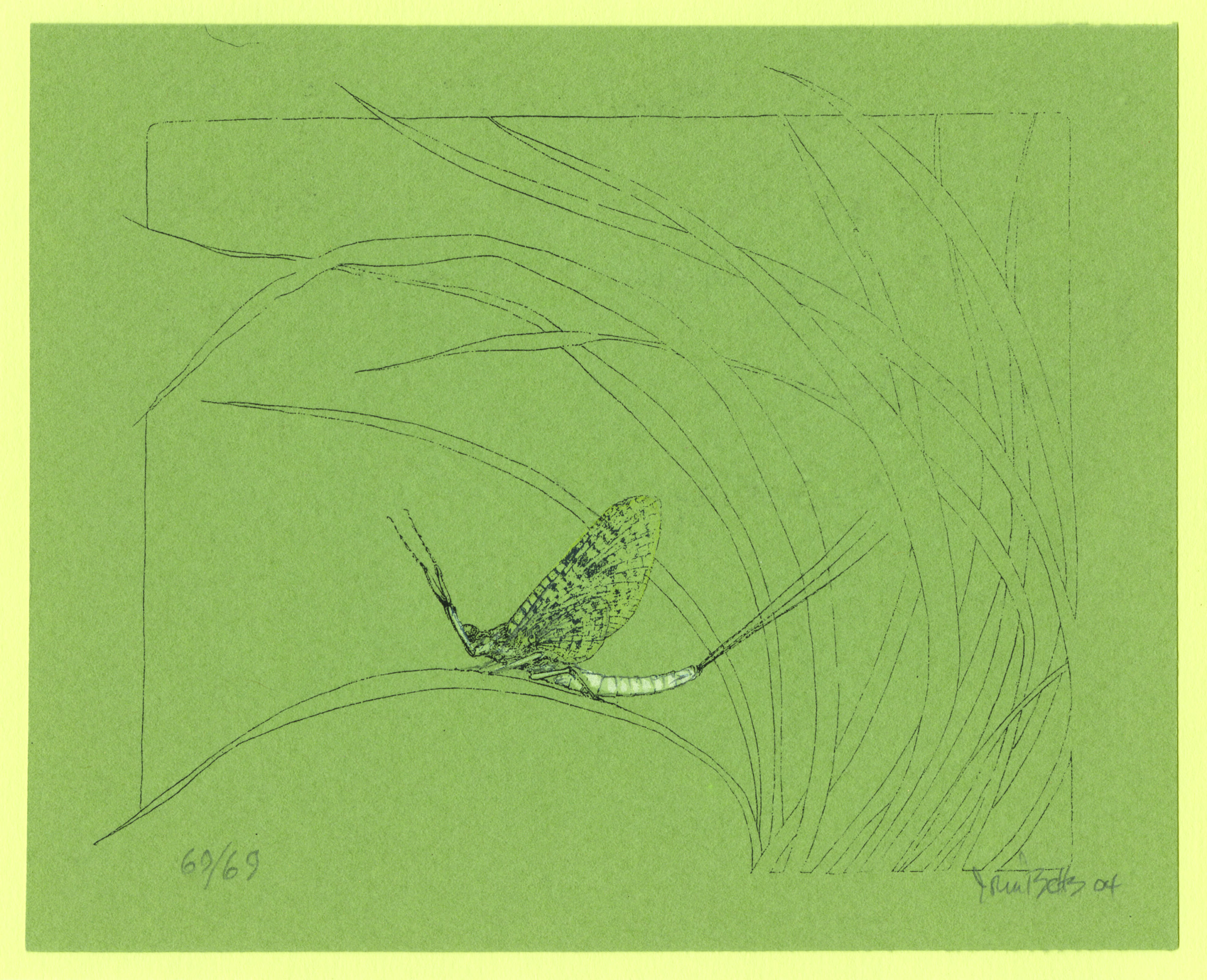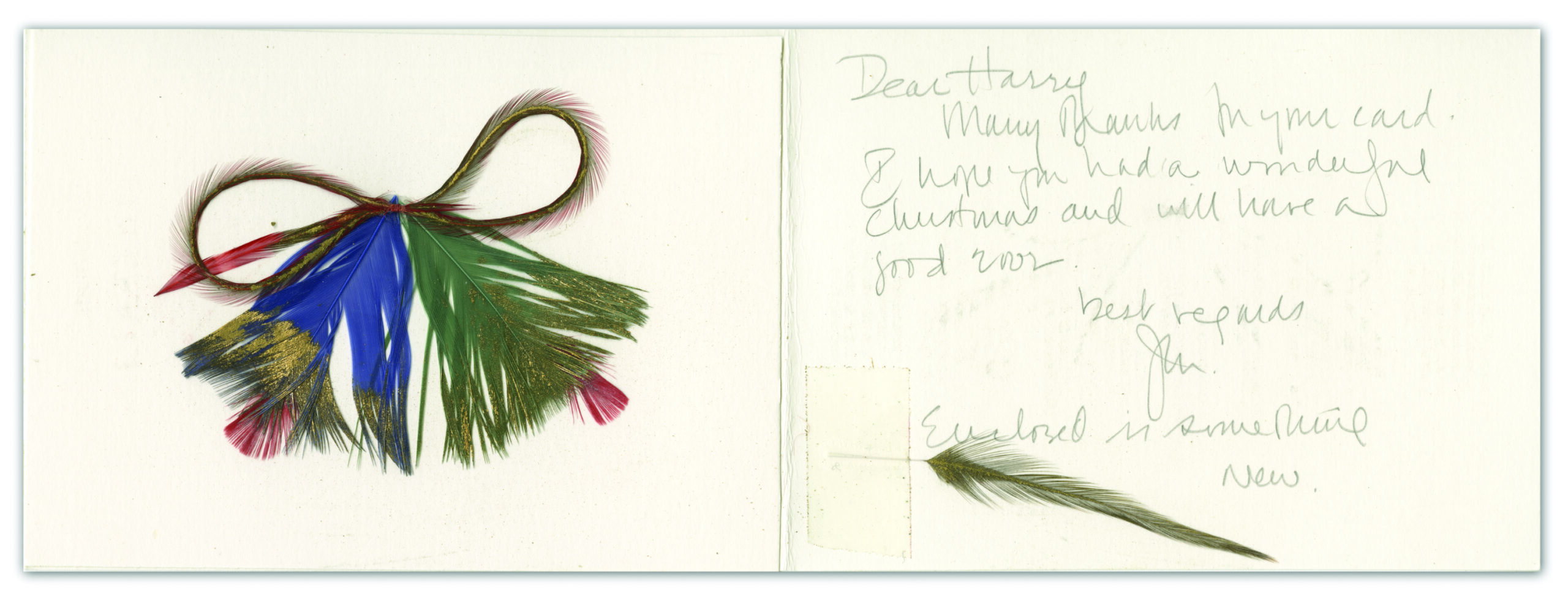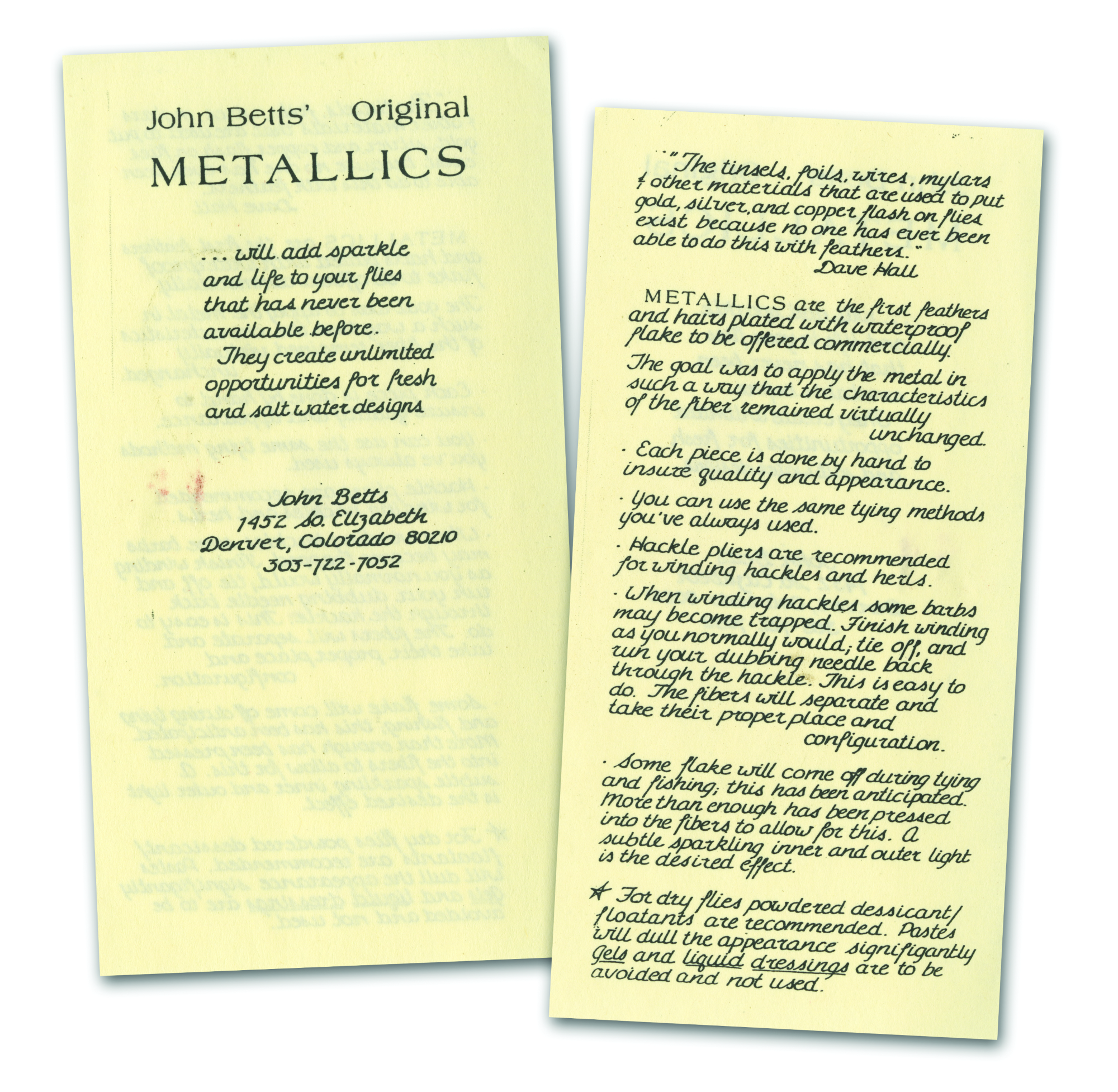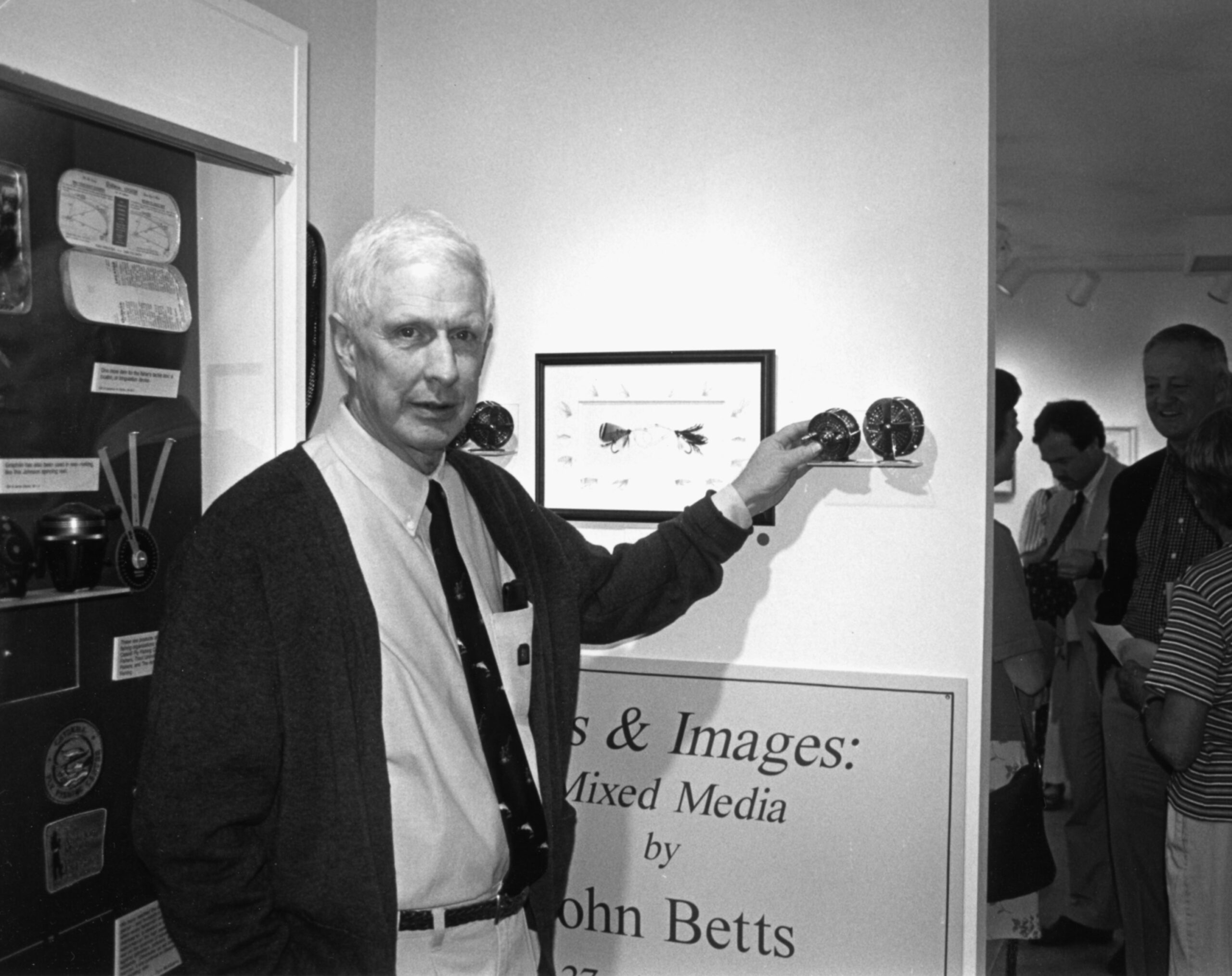By Harry J. Briscoe
Scattered about within my many boxes are certain flies that are special to me—saved and not used, but kept at hand. Some very few of them have come from my vise; others remind me of a specific fish, day, or place; still others spark memories of a trip or friend. Each time I rediscover these treasures, I smile with satisfaction and comfort. They are little gifts, even if they are gifts I’ve given to myself. Those that are handmade, rather than store bought, are prized. They are most important for the memories and knowing that they were created by a friend.
While reorganizing the many saved things in my office awhile back, I discovered another stack of little gifts: not flies, but again handmade, and these from a very special source. Regular readers of the American Fly Fisher will recall many contributions by John Betts. John was a unique and creative talent with wide-ranging expertise in all aspects of fly fishing. He was an exacting historian and analyst.
Some among us make our own flies. Some fewer have the talents necessary to create art or to write well. John did all those things with detail and precision and insight. Precious few, however, undertake the making of one’s own fly reels, crafting them from wood or metal stock and creating all of the components down to the tiny screws themselves. John built fly rods from scratch, using raw woods other than bamboo. Near none among us hold the talent or patience to do that. John Betts did, and he wrote complete books about each of those efforts, all in exacting and instructive detail. He was a gem. Some have called him the Renaissance man of modern fly fishing. It’s hard to accept that he’s been gone from us for more than two years now.
To my own good fortune, I learned that John also made his own Christmas cards. In a previous life, I was an occasional friend of John and Betsy Betts, a couple with many friends. Through our friendship, I received my holiday treasures.
My recent rediscovery is a trove of eight Christmas cards that I’ve saved for nearly twenty years, intending someday to mount them into an appropriate frame. Each is a handcrafted work of art, reminiscent of John’s 5-by-5-inch limited-edition book, Remarques (Reel Lines Press/The Whitefish Press, 2012). The cards are crafted simply from a small piece of colored construction paper, cut and folded in half. A small piece of John’s art is pasted onto one side, generally signed and numbered. On the opposite of the folded faces, John penciled a short personal holiday greeting. One of cards is not dated, but I received all of them during the late 1990s and into the mid-2000s.
The scenes are varied. Not only do they exhibit John’s unique artistic talent, they speak to the creativity of his thought. Three inquisitive snowy owls peer over a snowy mound in front of a winter sky. One year the greeting arrives from a small flock of snow geese. Three cards feature trout: fish and rocks in the streambed viewed from directly above, a school in profile on a white background, a single fish craftily hidden in a sketch of Gore Creek at Vail. One card is a study in color and pattern suggestive of a trout’s spots. An elegant sketch of a delicate mayfly on a wisp of grass is reminiscent of his noted limited-edition print, The Bubble (the original watercolor is part of the museum’s collection). The last card is a detailed creation of the innovative metallic feathers that John originated and used in his own fly tying, accompanied by an explanation of the concept and tying instructions. That card includes a small festive bouquet of the feathers themselves, fashioned as holiday bells. There’s even a separate single hackle feather that I could have used in my own creations. (No chance of that; the gift of that feather is more precious than any fly I might attempt.)
These simple little gifts, each entirely handmade, are treasures. Like those special flies in my boxes, they give again each time I find them. The flies are reminders of good times past. John’s cards evoke memories of an exceptional individual. In addition to the pleasure derived when I see these things, I believe there’s a lesson here. We do ourselves favors when we pause long enough to remember the special people and times from our own pasts. The little gifts of fly fishing include much more than the hours spent streamside. We should pay attention.
This article first appeared in the Fall 2020 (Vol. 46, No. 4) issue of the American Fly Fisher.


